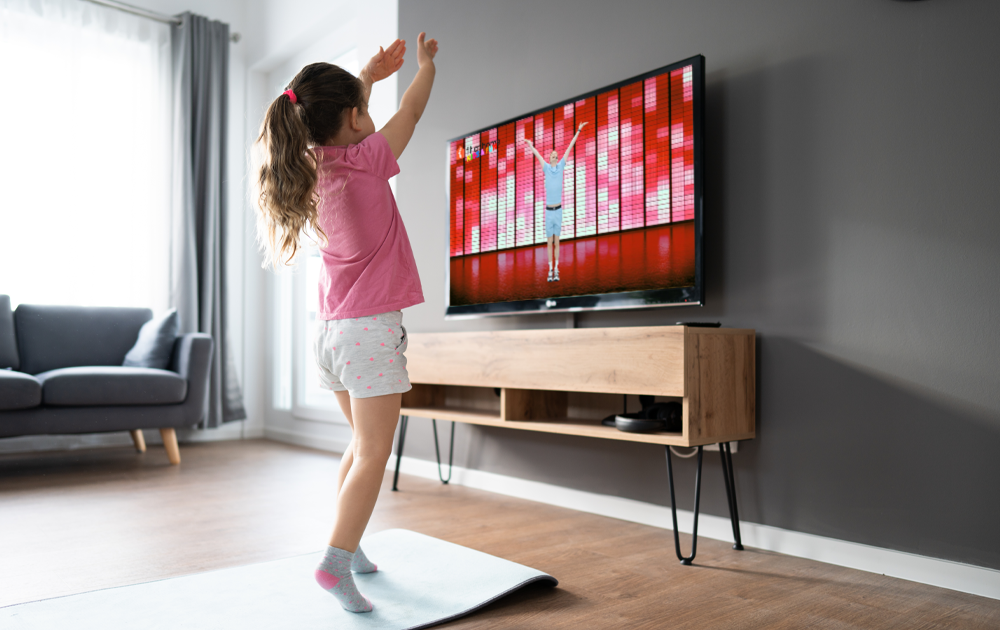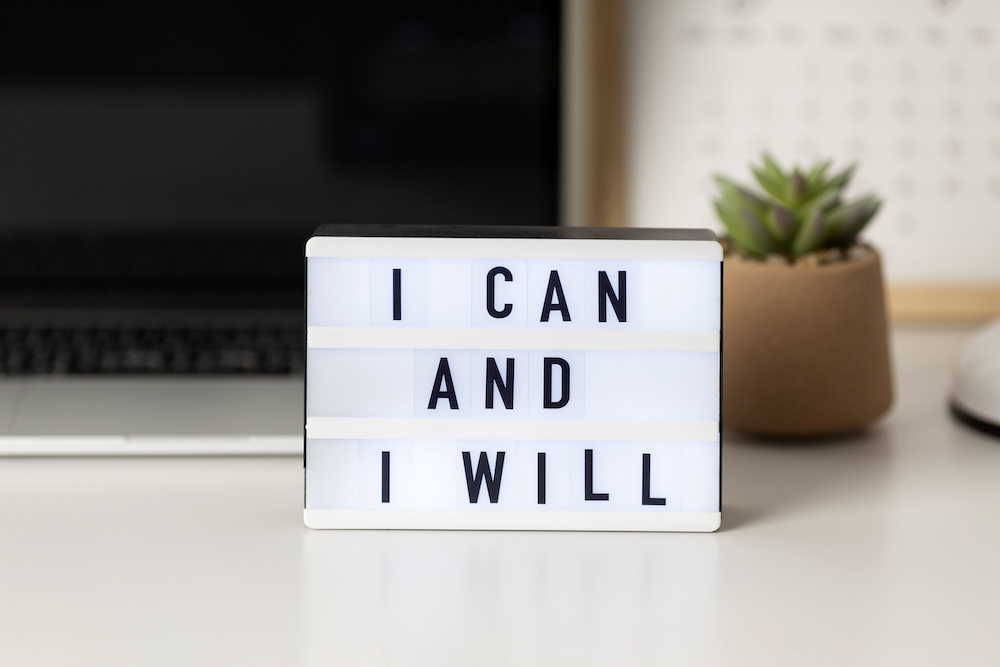Embarking on a fitness journey is not just a commitment to transform your body; it’s an empowering decision to enhance your overall well-being and embrace a positive lifestyle. The path to achieving your fitness goals is filled with opportunities for growth, self-discovery, and a renewed sense of vitality. By approaching this journey with positivity and dedication, you’re not just sculpting your physique but also fostering a resilient mindset that can overcome any obstacle. Let’s delve into proven strategies that will not only guide you toward your fitness aspirations but also infuse your wellness journey with optimism and joy.
Why setting up goals?
Setting goals is important for several reasons, and it applies to various aspects of life, including personal development, career, education, and fitness. Here are some key reasons why setting up goals is beneficial:
- Direction and purpose: Goals provide a clear direction and purpose. They give you a roadmap for where you want to go and help you stay focused on what’s important to you. Without goals, it’s easy to feel lost or uncertain about your path.
- Motivation and inspiration: Having well-defined goals can be a powerful motivator. They give you something to strive for and create a sense of purpose, which can fuel your determination and enthusiasm.
- Measurable progress: Goals help you track your progress and celebrate achievements. When you set specific, measurable objectives, you can see how far you’ve come and stay motivated to continue working towards your larger aspirations.
- Time management: Goals require planning and organization. They encourage effective time management as you allocate resources and prioritize tasks to achieve your objectives within a given timeframe.
- Accountability: Clearly defined goals hold you accountable for your actions. When you have a target in mind, you’re more likely to take responsibility for your decisions and work consistently towards your aspirations.
- Personal growth and development: Setting challenging goals encourages personal growth. It pushes you out of your comfort zone, promotes continuous learning, and fosters resilience in the face of obstacles.
- Enhanced focus and concentration: Goals help filter distractions and maintain focus. When you have a specific goal in mind, it becomes easier to concentrate on the tasks that contribute to its achievement, reducing the likelihood of getting sidetracked.
- Improved decision-making: Knowing your goals provides a framework for making decisions. When faced with choices, you can evaluate them based on how well they align with your objectives, making decision-making more straightforward.
- Increased self-confidence: Achieving goals, even small ones, boosts your confidence. As you experience success and overcome challenges, you develop a positive self-image and belief in your abilities.
- Enhanced satisfaction and happiness: Accomplishing meaningful goals contributes to a sense of satisfaction and happiness. It provides a sense of purpose and fulfillment, enhancing overall well-being.
- Social connection: Sharing your goals with others, whether friends, family, or colleagues, can create a sense of community and support. Others can offer encouragement, advice, or assistance in achieving your aspirations.
In summary, setting goals is a proactive and strategic approach to personal and professional development. It helps you create a meaningful and fulfilling life by providing direction, motivation, and a framework for growth.
Define clear and attainable goals
Setting specific, measurable, and realistic fitness goals is the first crucial step on your journey. Rather than a vague resolution like “get fit,” break it down into smaller, achievable objectives.

For example, aim to lose a certain amount of weight, run a specific distance, or increase your strength by a measurable percentage. Clear goals provide direction and motivation, helping you stay focused on your fitness journey.
Create a customized workout plan
Once you’ve defined your goals, it’s time to create a personalized workout plan. Tailor your exercise routine to align with your objectives, whether it’s cardiovascular workouts for weight loss, strength training for muscle gain, or a combination for overall fitness. Consider consulting with a fitness professional to ensure your plan is safe, effective, and well-suited to your fitness level.
A sample home workout plan
Here’s a sample home workout plan that you can customize based on your individual needs:
Warm-up (5-10 minutes):
- Jumping jacks: 2 minutes
- High knees: 2 minutes
- Arm circles: 1 minute
- Bodyweight squats: 2 minutes
Strength training (3 times a week):
- Push-ups: 3 sets of 10-15 reps
- Bodyweight squats: 3 sets of 15-20 reps
- Lunges: 3 sets of 12 reps (each leg)
- Plank: 3 sets, hold for 30-60 seconds
2. Dumbbell or household Item exercises:
- Dumbbell goblet squats: 3 sets of 12-15 reps
- Dumbbell rows (using household items): 3 sets of 12 reps (each arm)
- Overhead press (using household items): 3 sets of 10-12 reps
- Dumbbell deadlifts: 3 sets of 12 reps
Cardiovascular exercise (2-3 times a week):
- Jump rope: 15 minutes
- High-intensity interval training (HIIT) workouts (e.g., 30 seconds of high-intensity exercises like burpees, followed by 30 seconds of rest): 20 minutes
- Brisk walking or jogging in place: 20-30 minutes
Flexibility and mobility (daily):
- Dynamic stretching: 5-10 minutes before workouts
- Static stretching: 10-15 minutes after workouts
- Yoga or Pilates: 2-3 times a week for overall flexibility and balance
Cool down (5-10 minutes):
- Low-intensity cardio (e.g., walking in place): 5 minutes
- Stretching focusing on major muscle groups: 5 minutes
Tips:
- Progression: Gradually increase the intensity, duration, or resistance of your exercises as you get stronger.
- Rest: Allow at least 48 hours of rest between strength training sessions for muscle recovery.
- Hydration: Drink water before, during, and after your workout to stay hydrated.
- Listen to your body: If you experience pain (not to be confused with the discomfort of a good workout), consider modifying or skipping that exercise.
This is a general plan, and you should tailor it to your fitness level and preferences. If you have any pre-existing health conditions or concerns, it’s advisable to consult with a healthcare professional or a fitness expert before starting a new workout routine.

Prioritize nutritious eating habits
Exercise alone won’t yield optimal results; a balanced diet is equally crucial. Fuel your body with nutritious foods that support your fitness goals. Incorporate a mix of lean proteins, whole grains, fruits, and vegetables into your meals. Stay hydrated and be mindful of portion sizes. A well-rounded diet not only enhances your physical performance but also aids in recovery and overall health.
Stay consistent and track progress
Consistency is key when it comes to achieving fitness goals. Establish a regular workout routine and adhere to it as closely as possible. To stay motivated, track your progress over time. Use a fitness journal, mobile apps, or wearable devices to monitor your achievements, whether it’s weight loss, increased stamina, or improved strength. Celebrate small victories and use setbacks as learning opportunities to refine your approach.

Insufficient patience:
In our fast-paced world, instant gratification is often expected, but fitness is a journey that requires time and patience. Results may not be immediately visible, and plateaus are common. Cultivate patience and celebrate small victories along the way to maintain a positive mindset and stay committed to your goals.
Lack of support
Embarking on a fitness journey can be a lonely road without a support system. Whether it’s friends, family, or a fitness community, having a network of individuals who understand and encourage your efforts can make a significant difference. Share your goals with others and seek support when needed.
Incorporate rest and recovery
Don’t underestimate the importance of rest and recovery in any fitness journey. Overtraining can lead to burnout and injuries, hindering your progress. Include rest days in your weekly schedule to allow your body to recover. Prioritize quality sleep, as it plays a significant role in muscle repair and overall well-being. Listen to your body, and if you feel fatigued, give yourself the time needed to recuperate.

Cultivate a positive mindset
Your thoughts shape your reality, and this holds true in fitness. Cultivate a positive mindset by focusing on what you can do rather than what you can’t. Replace self-doubt with self-affirmation and acknowledge your progress. Positive thinking not only enhances your overall well-being but also fuels your determination to push through challenges.
Conclusion: Embarking on a fitness journey requires dedication, planning, and a holistic approach. By defining clear goals, creating a customized workout plan, prioritizing nutritious eating habits, staying consistent, tracking progress, and incorporating adequate rest, you’ll be well on your way to achieving your fitness goals. Remember, it’s not just about reaching the destination but enjoying the transformative journey toward a healthier, more active lifestyle.
Workout at home with Fit at Home!
Welcome to Fit at Home, your ultimate fitness partner for effective and enjoyable home workouts with no equipments! With our comprehensive range of workouts for the whole family and expert guidance, you can achieve your fitness goals right from the comfort of your own home.
We love to make you move!
✓ Work out in front of your tv whenever you want.
✓ 24/7 on-demand with more than 500 workouts.
✓ For the whole family.

Fit at Home is your NUMBER ONE fitness app for the whole family. You can achieve your fitness goals, whether you want to lose weight, relax with our meditation videos, let your kids exercise more often, improve your balance and coordination with Pilates etc. Our professional trainers will help you become the fittest, healthiest and happiest version of yourself and your family!
Transform your TV into your personal gym!

Keep yourself motivated to achieve your goals
Staying motivated to achieve your fitness goals can be challenging, but there are several strategies you can use to help maintain your motivation:
- Set clear and realistic goals: Define specific, measurable, achievable, relevant, and time-bound (SMART) goals. Break them down into smaller, manageable tasks so you can track your progress more easily.
- Create a plan: Develop a structured workout routine and schedule. Having a plan in place makes it easier to stick to your fitness goals. It also provides a sense of direction and purpose.
- Find enjoyable activities: Choose exercises and activities that you enjoy. If you like what you’re doing, you’re more likely to stay motivated. This could be anything from dancing, cycling, hiking, or team sports.
- Mix It up: Variety in your workouts can prevent boredom and keep things interesting. Try different exercises, classes, or outdoor activities to keep your routine fresh and challenging.
- Track your progress: Keep a record of your achievements, whether it’s in a journal, a fitness app, or through photos. Seeing how far you’ve come can boost your motivation and reinforce your commitment.
- Set rewards: Treat yourself when you reach certain milestones. This could be a small indulgence, a day off, or a reward related to your fitness journey, like new workout gear.
- Find a workout buddy: Having a workout partner can make exercise more enjoyable and hold you accountable. You can motivate each other and share your successes and challenges.
- Join a community: Participate in fitness classes, online forums, or social media groups where you can connect with like-minded individuals. The sense of community and shared goals can provide support and encouragement.
- Visualize your success: Imagine yourself achieving your fitness goals. Visualization can be a powerful motivator, helping you stay focused on the positive outcomes of your hard work.
- Prioritize self-care: Ensure you’re getting enough rest, sleep, and proper nutrition. Taking care of your overall well-being can contribute to sustained energy levels and motivation.
- Adjust your perspective: Instead of focusing solely on the end result, enjoy the journey. Celebrate the small victories and improvements along the way.
- Remind yourself of the why: Regularly reflect on the reasons behind your fitness goals. Whether it’s improving your health, boosting confidence, or enhancing your overall well-being, reconnecting with your motivations can reignite your commitment.

Remember, motivation can fluctuate, so it’s normal to experience highs and lows. The key is to establish habits and strategies that help you push through the challenging times and stay committed to your fitness journey.